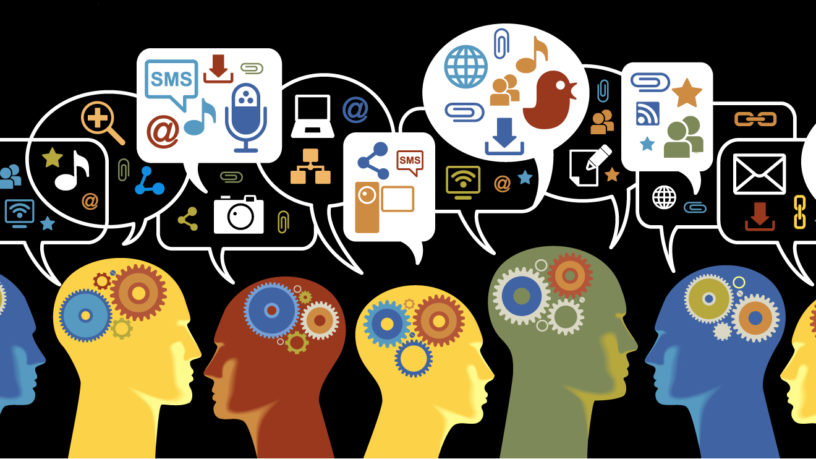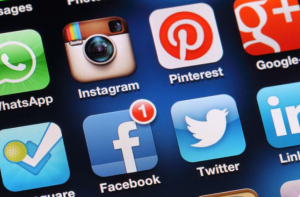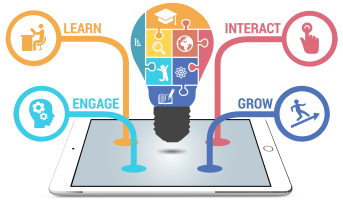Below is the link for my padlet and my voice over.
Padlet: https://padlet.com/risbec2009/s55lfmhvisho
Voice over: https://soundcloud.com/user-358186128-20826815/digital-fluency

Below is the link for my padlet and my voice over.
Padlet: https://padlet.com/risbec2009/s55lfmhvisho
Voice over: https://soundcloud.com/user-358186128-20826815/digital-fluency

Link for auditory: https://soundcloud.com/user-358186128-20826815/transmedia-5052018-829-pm
Today I will be discussing the topic of transmedia. Transmedia is arguably the least commonly known out of four major elements of change that have happened to society, these include social networking, mobile computing, augmented reality and transmedia (Pence, 2012). Transmedia is believed to have originated in Japan in the 1970s, where it was called “media mix.” (Pence, 2012). A simple definition for transmedia is a narrative that extends beyond multiple media forms that also plays to the strength of those forms (Heick, 2017). In simple terms, all forms of media now have the ability to tell a story with the key difference being audience engagement.
With the digital world we now live in, transmedia has rapidly risen to suit the society we live in. Transmedia allows for the audience to become actively involved and engaged (Rutledge, n.d.). Transmedia stories can be simple, across a few low-tech media platforms. Or they have the ability to transition between the story and reality by bringing the narrative into reality in the form of complex and exciting alternative reality games known as ARG’S (Rutledge, n.d.). ARG’s are where people capture the narrative elements and characters of normal narratives using a virtual experience as part of the story world (Rutledge, n.d.).
Transmedia has a massive impact on education as living in a digital world, children of all ages actively engage in these transmedia stories because of the virtual reality that would excite any child. Imagine being able to actively participate in a story, your favourite kids’ story, the thought of that for many young children would bring a beaming bright smile on any child’s face because of the ability to ‘hands on’ participate in an activity.

Pence, H. (2012). Teaching With Transmedia. Educational Technology Systems, 40(2), 131-140. https://doi-org.dbgw.lis.curtin.edu.au/10.2190/ET.40.2.d
Heick, T. (2017, August 28). The Definition Of Transmedia [The Future Of Learn]. Retrieved from https://www.teachthought.com/the-future-of-learning/the-definition-of-transmedia/
Rutledge, P. (n.d.). What is Transmedia Storytelling? Retrieved from http://athinklab.com/transmedia-storytelling/what-is-transmedia-storytelling/
The digital world makes up human beings daily life. Not only is it something that is ever evolving and changing, the digital world controls everyday life. People now socialise through digital technology and their professional lives are influenced by technology (Keenan, 2015). The digital world has come about from changes made to technology, which can still be seen happening to this very day. The devices of the digital world are mobile phones, also known as smartphones, laptops and computers. These devices are the main devices, in which we could call smart devices, that have significantly advanced in the past 15 years leading to a change in society (Van Belleghem, 2016).
Human beings have their lives in their hands. By the touch of a button, everyday aspects of life can be controlled by a smart device. Human beings put so much trust into one device that you could almost say it is a controlling aspect of one’s life. Looking at it from an educational perspective, children from the age of 3 are glued to a smart device, it’s almost as if hands-on learning has been abandoned. From a professional perspective modern consumers demand and embrace improving advancements in technology, this intelligent standard is paving the way for leading companies around the world (Van Belleghem, 2016).
In simple terms the digital world surrounds people, it is all around them and it has gotten to the point where human beings cannot survive without the digital world because it is second nature to so many. The digital world is a complex equation that may create uncertainties and doubts but the reality of the digital world is that it is a world all people live in and a world that has many advancements and endless possibilities (Greengard, 2011).


Keenan, D. (2015, March 24). Teaching In A Digital World [The ‘digital world’. What does it mean?]. Retrieved from https://donnakeenan.wordpress.com/2015/03/24/the-digital-world-what-does-it-mean/
Van Belleghem, S. (2016). How the digital world is shaping the modern consumer. Strategic Direction, 32(5), 1-2. https://doi.org/10.1108/SD-02-2016-0026
Greengard, S. (2011). Living In A Digital World. Communications Of The ACM, 54(10), 17-19. doi:10.1145/2001269.2001277